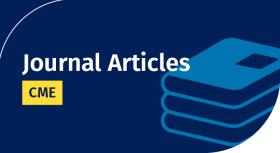
Telemonitoring for Home-assisted Ventilation: A Narrative Review
The recent advent of remote ventilator telemonitoring has the potential to revolutionize home-assisted ventilation care in the United States and elsewhere. Home ventilation machines (i.e., respiratory assist devices and portable ventilators) can now wirelessly transmit usage and performance data to cloud-based web servers for remote access by participating clinicians.
In this Focused Review, we provide an update on available technology, suggest practical applications for clinical care and research, and review supporting literature.
Remote monitoring permits early data review, refinement of device settings to optimize ventilatory function, and troubleshooting if a new problem arises after initial setup. Data from home spirometry and noninvasively measured blood gas tensions can complement ventilator data to reflect physiological response. Acknowledging a paucity of published outcome studies, remote telemonitoring may be a cost-effective strategy to reduce emergency room visits, urgent clinic appointments, and hospitalizations.
Ongoing clinical trials in Europe aim to expand on the benefit of this rapidly evolving technology. However, several barriers may hinder widespread implementation, especially in the United States. Clinicians must familiarize themselves with each ventilator manufacturer’s proprietary software to safely leverage this technology for improving care. Legal and ethical considerations threaten clinician interest. Medical insurance payers must adapt a reimbursement scheme to incentivize clinicians and durable medical equipment companies to perform this time-consuming service. Cohort-level ventilator data will facilitate multicenter clinical trials focused on improving the respiratory care of this vulnerable population.
Target Audience
Pulmonologists, critical care specialists, translational researchers, and clinicians
Learning Objectives
At the conclusion of this activity, learners should be able to:
- Integrate remote telemonitoring into routine care of outpatients on home mechanical ventilation.
- Incorporate data from remote telemonitoring into clinical decision making for patients on home mechanical ventilation.
- Bill for reimbursement of care coordination for telemonitoring of home mechanical ventilation.
Accreditation Statement
The American Thoracic Society is accredited by the Accreditation Council for Continuing Medical Education to provide continuing medical education for physicians.
Disclosure Declaration
Article Authorship Disclosures (as submitted to the ATS prior to article publication date)
Jason Ackrivo, MD, MSCE (University of Pennsylvania Perelman School of Medicine, Philadelphia, PA, USA) reported receiving personal fees from Hillrom.
Lauren Elman, MD (University of Pennsylvania Perelman School of Medicine, Philadelphia, PA, USA) reported no relevant financial relationships.
John Hansen-Flaschen, MD (University of Pennsylvania Perelman School of Medicine, Philadelphia, PA, USA) reported receiving personal fees from Revalesio.
Off-Label Usage Disclosure
None
Disclosures of AnnalsATS CME Planners
The Annals of the American Thoracic Society (AnnalsATS) original research, commentaries, reviews, and educational content of interest to clinicians and clinical investigators in pediatric and adult pulmonary and sleep medicine and medical critical care. The scope of the journal encompasses content that is applicable to clinical practice, the formative and continuing education of clinical specialists, and the advancement of public health.
The publication of articles that meet these goals by itself is only one step in a multi-step process for the translation of evidence-based improvements in are to clinical practice. Testing for CME credit is designed to function as a next step in the process. This is accomplished through a series of questions written by the author(s) to test that readers have the tools needed to translate recommendations for diagnostic and therapeutic clinical care into clinical practice. Members of the AnnalsATS editorial board review these questions and edit these questions for clarity, educational content, and the quality of the evidence supporting the response to the question.
AnnalsATS CME Planners
Alan M. Fein, M.D.
Podcast Editor, AnnalsATS
Dr. Fein reported that he has no financial relationships with ineligible companies.
Constantine Manthous, M.D.
Associate Editor, AnnalsATS
Dr. Manthous reported that he has no financial relationships with ineligible companies.
Gregory A. Schmidt, M.D.
Editorial Board, AnnalsATS
Dr. Schmidt reported payments for writing a textbook on critical care medicine (McGraw-Hill) and for writing contributions for UptoDate.
Instructions to Receive Credit
To receive credit for this journal article:
- Read the journal article. Keep track of how long it takes you to read it.
- Once you open the article, the Post-Test becomes available. After reading the article, answer the post-test questions. You must answer all questions correctly to earn credit. You may take the test as many times as you like.
- Once you pass the Post-Test, the Evaluation becomes available. Answer all the evaluation questions.
- Once you complete the evaluation, select the amount of credit to receive based on the time it took you to read the article.
- You can view, save and print your Certificate by pressing the Certificate button.
- To review the credits you've earned in this system and reprint certificates, go to the My Learning drop-down list. Then select Transcript.
Available Credit
- 1.00 AMA PRA Category 1 Credit(s)™The American Thoracic Society designates this for a maximum of 1.00 AMA PRA Category 1 Credit(s)™. Physicians should claim only the credit commensurate with the extent of their participation in the activity.
- 1.00 Participation

 Facebook
Facebook X
X LinkedIn
LinkedIn Forward
Forward